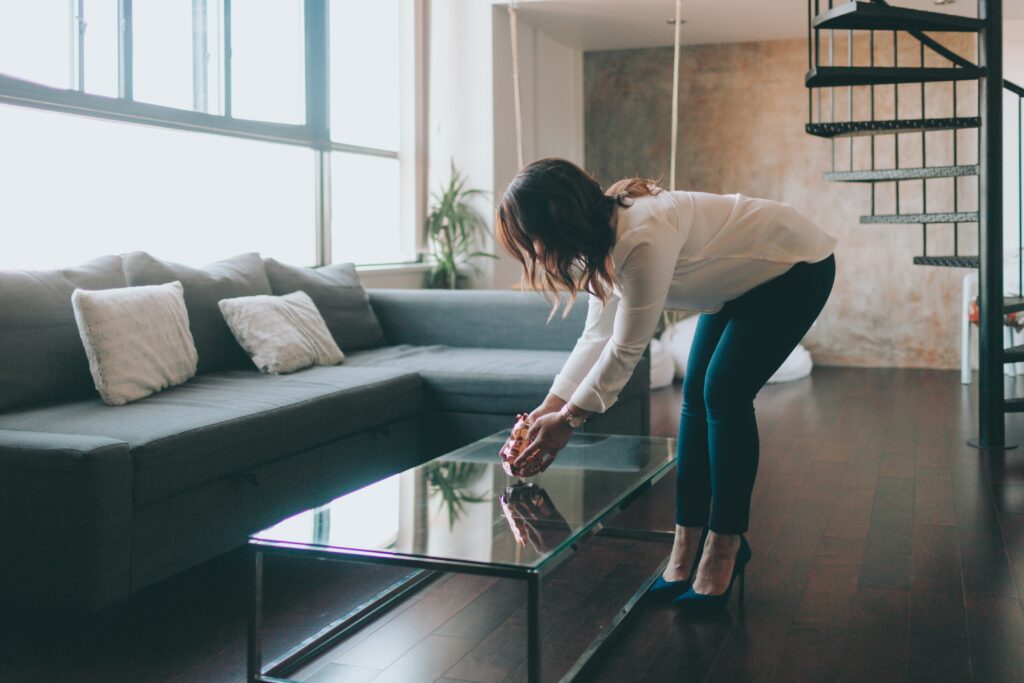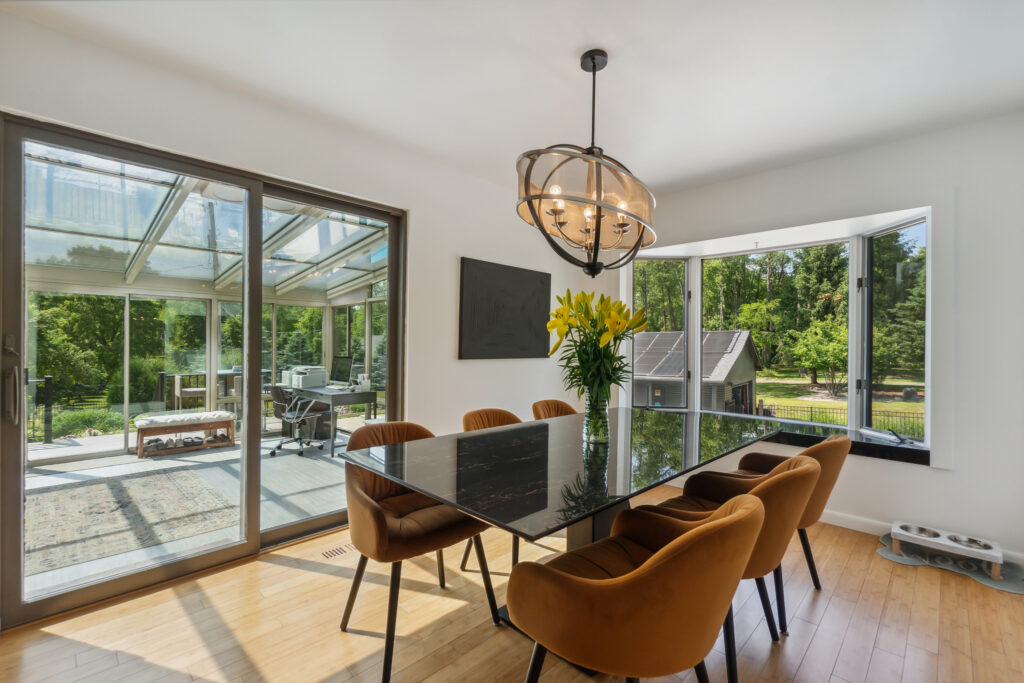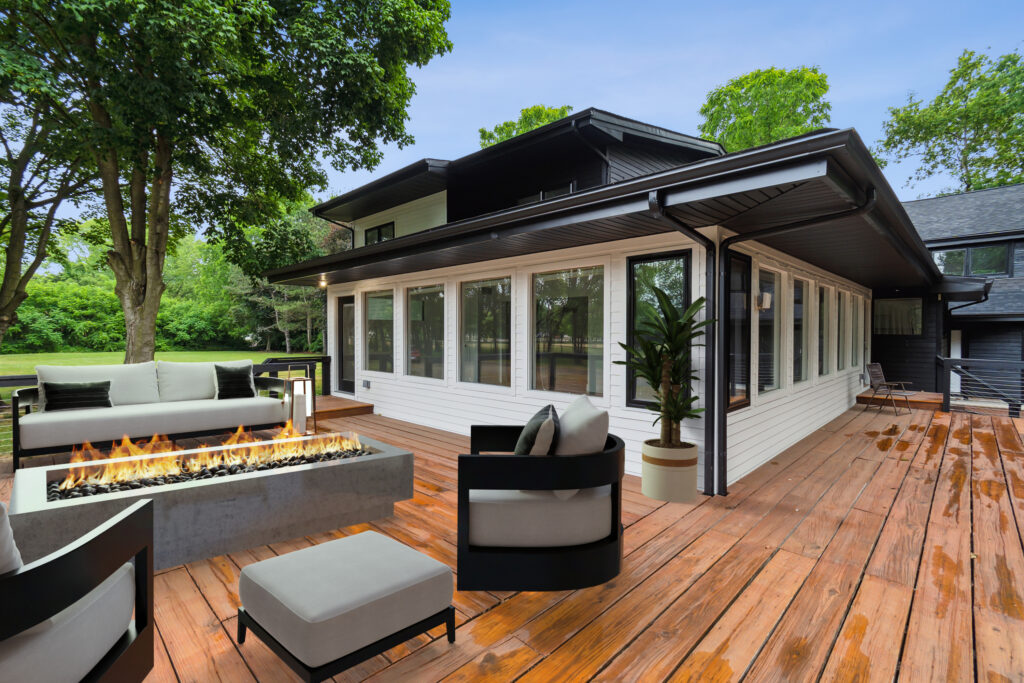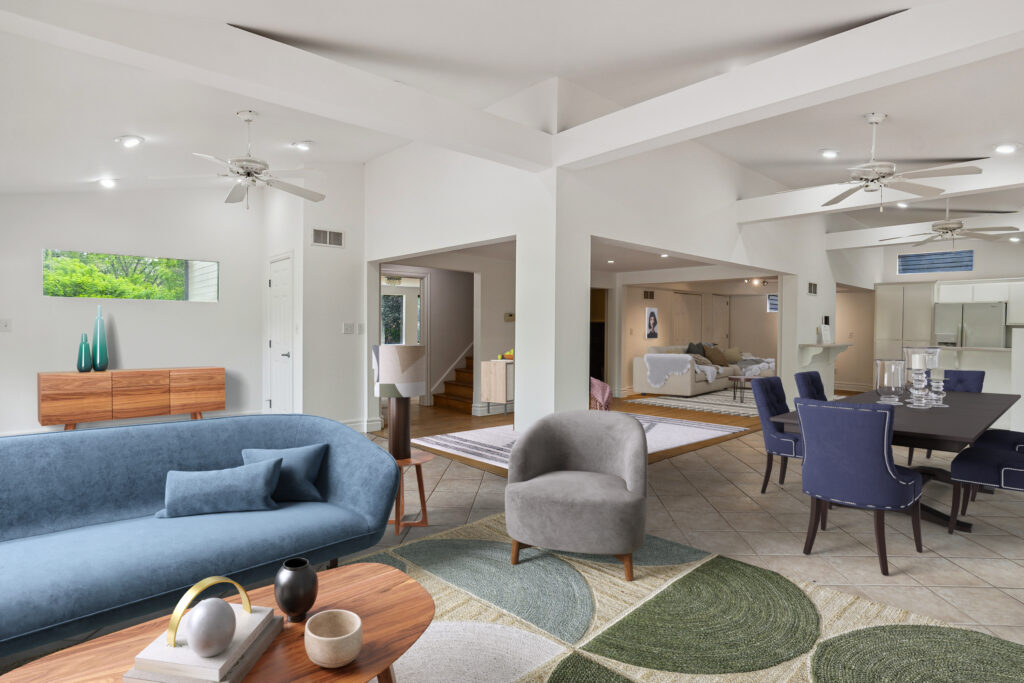Seeing is Believing: Comparing the Benefits of Virtual and Real Staging
When it comes to selling a home, seeing is believing.
Virtual staging and real staging are two popular options for sellers looking to showcase their homes in the best possible light. But which one is right for you?
In this blog post, we’ll compare the benefits of both virtual and real staging so you can make an informed decision and get the most out of your home sale. Keep reading!
The Definition of Staging

When it comes to selling a home, staging plays a crucial role in presenting the property in the best possible light.
But what exactly does staging mean? Staging refers to the process of preparing and decorating a home to make it more appealing to potential buyers. It involves creating a warm and inviting atmosphere that allows potential buyers to envision themselves living in the space.
Staging can be done in various ways, depending on the seller’s budget and preferences. It can involve rearranging furniture, adding new decor, and even making small renovations to enhance the overall look and feel of the home. The goal of staging is to highlight the home’s best features and downplay any flaws or imperfections.
By staging a home, sellers can transform an empty or cluttered space into a visually appealing and desirable property. It allows buyers to see the full potential of the home and helps them connect emotionally with the space. Staging creates a positive first impression, increases perceived home value, and speeds up and potentially profits the sale.
What is Real Staging?

Real staging is a traditional method of staging a home that involves physically furnishing and decorating the space to make it more appealing to potential buyers. It is a hands-on approach that utilizes actual furniture, artwork, and decor to create a visually pleasing and inviting atmosphere.
In real staging, professional stagers bring in furniture and accessories to highlight the best features of the home and create a cohesive and stylish look. They strategically arrange the furniture to maximize space and flow, creating a sense of warmth and livability. Real staging can transform an empty or outdated space into a stunning showcase that captures the attention of potential buyers.
One of the main benefits of real staging is the emotional connection it can create with buyers. By seeing a furnished home, buyers can imagine themselves living in the space and envision how they would utilize the rooms. Real staging allows buyers to experience the home firsthand, which can lead to a stronger desire to purchase.
However, real staging does come with some costs. Hiring professional stagers and renting furniture can be expensive, especially for larger homes or high-end properties. There is also the time and effort involved in coordinating the staging process and maintaining the staged home during the selling period.
The Benefits of Real Staging

Real staging offers numerous benefits for sellers looking to showcase their homes in the best possible light.
One of the main advantages is the emotional connection it can create with potential buyers. By furnishing and decorating the space, real staging allows buyers to envision themselves living in the home and imagine how they would utilize each room. This emotional connection can increase the desire to purchase and lead to a quicker sale.
Another benefit of real staging is the ability to highlight the best features of the home. Professional stagers strategically arrange furniture and accessories to maximize space and flow, creating a visually appealing and inviting atmosphere. By showcasing the home’s strengths, real staging can enhance its perceived value and generate more interest from potential buyers.
Additionally, real staging helps buyers see the full potential of the home. An empty or outdated space can be transformed into a stunning showcase that captures attention. This allows buyers to visualize the possibilities and feel more confident in their decision to purchase.
While real staging does come with costs, including hiring professional stagers and renting furniture, the benefits often outweigh the expenses. The emotional connection, enhanced perception of value, and ability to showcase the home’s potential make real staging a worthwhile investment for sellers.
The Costs of Real Staging

Real staging offers numerous benefits for sellers looking to showcase their homes, but it does come with some costs.
The main expense associated with real staging is hiring professional stagers and renting furniture. Depending on the size of the home and the desired level of staging, these costs can add up quickly. High-end properties and larger homes may require more furniture and decor, resulting in higher expenses.
Another cost to consider is the time and effort involved in coordinating the staging process and maintaining the staged home during the selling period. Stagers need time to plan and execute the staging, and sellers must ensure that the home remains presentable for potential buyers. This can be challenging, especially for sellers who are already busy with work or other responsibilities.
In addition, there may be additional expenses for small renovations or repairs to enhance the overall look and feel of the home. These costs can vary depending on the condition of the property and the desired level of improvement.
While real staging does come with expenses, many sellers find that the benefits outweigh the costs. The emotional connection, enhanced perception of value, and ability to showcase the home’s potential make real staging a worthwhile investment. It can lead to a quicker sale and potentially higher offers, making the costs of real staging worth considering.
What is Virtual Staging?

Virtual staging is a modern and innovative method of staging a home that involves digitally enhancing and decorating photographs of the space.
Unlike real staging, which utilizes physical furniture and decor, virtual staging utilizes virtual furniture and decor that is added to images of empty rooms.
With virtual staging, professional designers use advanced software to digitally place furniture, artwork, and other accessories in the photographs. They can choose from a wide range of furniture styles, colors, and layouts to create a customized look that best suits the home and appeals to potential buyers.
One of the main benefits of virtual staging is its flexibility and cost-effectiveness. Since it does not require the rental and delivery of physical furniture, virtual staging is often more affordable than real staging. It also allows sellers to showcase different styles and layouts, giving potential buyers a variety of options to visualize themselves in the space.
Additionally, virtual staging allows for easy and quick changes. If a seller wants to change a piece of furniture or color scheme, it can be done digitally withouts hassle. This flexibility allows sellers to experiment with different designs and find the most appealing look for their home.
However, it’s important to note that virtual staging does have limitations. Since the furniture and decor are not physically present in the home, potential buyers may feel disappointed or misled when they view the property in person. It’s crucial for sellers to accurately represent the home’s current condition and ensure that the digitally staged images reflect the reality of the space.
The Benefits of Virtual Staging

Virtual staging offers a variety of benefits for sellers looking to showcase their homes in the best possible light.
One of the main advantages is the cost-effectiveness of virtual staging compared to real staging. Virtual staging eliminates the need for rental furniture and physical staging setup, resulting in significant cost savings for sellers. This is especially beneficial for sellers on a tight budget or those looking to minimize expenses.
Another benefit of virtual staging is the ability to showcase multiple design options. With virtual staging, sellers can easily switch out furniture styles, layouts, and decor with a few clicks, providing potential buyers with a range of visualizations. This flexibility allows sellers to cater to different tastes and preferences, increasing the likelihood of attracting a larger pool of interested buyers.
Additionally, virtual staging can help buyers see the full potential of the home without the distraction of existing furniture or decor. Virtually staging an empty space helps buyers imagine their own furnishings and belongings in the home. This can lead to increased interest and a stronger desire to make an offer.
It’s important to note that virtual staging does have its limitations, as the furniture and decor are not physically present in the home. However, when used correctly and in conjunction with accurate representation of the home’s condition, virtual staging can be a powerful tool for attracting potential buyers and maximizing the appeal of the property.
The Costs of Virtual Staging

While virtual staging offers many benefits, it’s important to consider the costs involved.
Unlike real staging, which requires physical furniture and decor, virtual staging relies on digital enhancements and editing. This means that professional designers use advanced software to digitally add furniture and accessories to photographs of empty rooms.
The main cost advantage of virtual staging is its affordability compared to real staging. Since there is no need to rent or deliver physical furniture, virtual staging is often much cheaper. This is especially beneficial for sellers on a budget or who want to minimize home selling costs.
However, it’s important to keep in mind that virtual staging does have its limitations. Potential buyers may be disappointed if the digital photos don’t match the home’s condition once they see it. Additionally, there may be costs involved in ensuring that the home is properly prepared such as cleaning and minor repairs.
Despite these limitations and additional costs, virtual staging can still be a cost-effective option for sellers looking to showcase their homes. It allows for flexibility, multiple design options, and the ability to easily make changes as needed. By considering the costs and benefits, sellers can determine if virtual staging is the right choice for their home.
Comparing the Two
Now that we’ve explored the benefits and costs of both virtual staging and real staging, let’s compare the two to help you make an informed decision. Both options have their own unique advantages and considerations.
Real staging offers the advantage of creating an emotional connection with potential buyers. By furnishing and decorating the home, buyers can envision living there and making use of each room. Real staging also allows for highlighting the best features of the home and showcasing its full potential. However, it does come with costs, including hiring professional stagers and renting furniture. There is also the effort involved in coordinating the staging process and maintaining the staged home during the selling period.
On the other hand, virtual staging offers the benefit of cost-effectiveness. With digital enhancements, sellers can showcase multiple design options without the need for physical furniture. It also allows potential buyers to envision their own furniture and belongings in the space, leading to increased interest. However, there is the risk of potential buyers feeling disappointed if the digitally staged images do not accurately represent the current condition of the home.
When deciding between virtual staging and real staging, consider your budget, time constraints, and the specific needs of your home. Ultimately, the choice depends on your individual circumstances and goals for selling your home.
Ready to sell your property? Give us a call today and learn more about our professional photography services that can boost your property listing!
Plus, explore our virtual assistant coaching program to level up your business. Don’t forget to tune into our new podcast for even more valuable insights!
